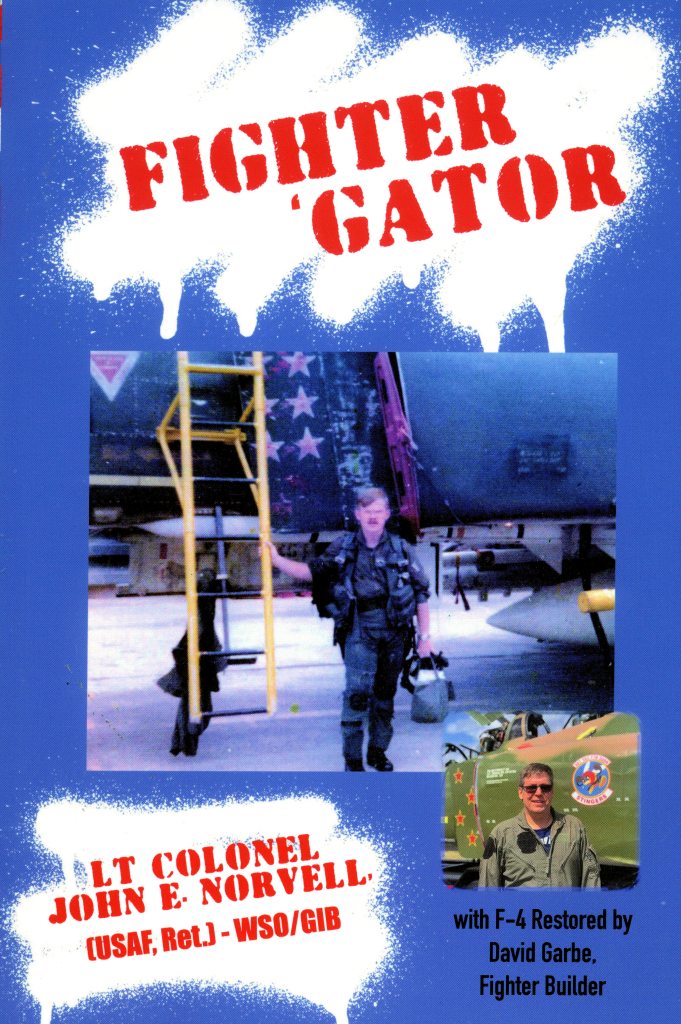Unlike Undergraduate Navigator Training –UNT, the F-4 backseat AKA “The Pit” was a very different world.
At nav school, I sat at a table in a classroom, “flew” our practice mission, and did my computations. In the F-4 Sim, I sat in the rear cockpit. Both Sim cockpits were complete with all the controls of the actual bird, instruments, and ejection seats. I turned on the Inertial Navigation System (INS), radar, and ran my pre-flight checklists. Upon sim takeoff, I used the radar in support of the mission profile. Periodically, an emergency would happen. Then we worked as a team to deal with it. These two hour sim missions challenged me in a new way. 
We newly-graduated navigators had always approached our work from the proposition that we had made an error that we needed to find and correct. Some folks called Navs “airborne book keepers” as we were always engrossed in recording numbers into our logs so that we could reconstruct the missions later, if needed. We were in many ways the anti-fighter pilots. More retrospective and detail oriented.
Arriving at Luke and having been trained this way, I found now that I had to be more like a pilot. Not only confident and in control of what I did, but detail oriented and aware always of our environment, and knowledgeable in every aspect of the F-4. I needed to know how it flew and operated, and how it would be used in combat. 
In the F-4, the AC/GIB (Guy in back/WSO) team worked in tandem the entire flight from takeoff to landing. Flying the Phantom needed a combination of skills sets. The fighter pilot brought one set, the WSO the other. Together they worked in concert: a partnership of the geometric, spatial, and analytical skills. In those pre high tech days, these were needed to fly a modern high-powered fighter like the F-4.
Fighter Pilots were the elite of the Air Force. The Fighter Pilot continually pushed himself to do better. They trained to make their skills sharper. They were confident that they had made the right decisions and were always in control. They were competitive. I could go on, but I think you get the picture. One last thing, to a fighter pilot any other aircraft was one thing: a target. He viewed combat as mano a mano. There was a mystique about flying a fighter aircraft going back to World War I. Our instructors were linked to the one-on-one combat of the past and the blood of Eddie Rickenbacker, the WWI Flying Ace, flowed in their veins. If these men were the knights of old, we now were their squires and we had a great deal to learn.
I loved it, absolutely loved it. As a non rated captain, I had been in such a dead end job in DC and now I was in the backseat of the hottest fighter in the Air Force. Moreover, the men I flew with valued me as a member of the team.
It is interesting to think about this now. The navigator had only been in the rear seat for a few years. When the F-4 entered service there were two pilots. Years later I talked with a man who had been a “rear” seat pilot and he said that he and others hated being in the back. They wanted to be in front. This discontent opened the backseat to navs.
I was glad that it did. I fit the backseat perfectly. I did my job very well. During all the years I flew the F-4 I never encountered an AC who did not value what I did for him.
The Pit was where I was meant to be.


I can remember talking to an F-4 pilot before the AF made the transition to Navs. The pilot’s comment always stuck with me. “I’d rather have the 200 lbs of gas.” The Navy had designed the F-4 for fleet defense with an NFO always in the back. The AF didn’t think they needed a dedicated systems specialist until they ran out of pilots to put back there. A good posting John.
I got the same “200 lbs of gas” story when I first started flying in the F-4.
I had the fortune to be one of the early Nav’s in the Pit while they were mostly pilots – had a combat tour there. You are so right – the pilots yearned for a front window seat while Nav’s appreciated the Pit and all it could add to the mission. I had the good fortune, also to go to pilot training and spend almost 20 years in the front seat. That gave me a big advantage in the overall mission. Also eliminated the possibility of the radar jock pulling one over on me! Got to be refreshed often in WSO-related requirements in the Pit as IP and FE. “If you die, please fall on the gear handle!”
Thanks David for you insights. it was a great life, wasn’t it. Cheers
John, I think the first new nav grads to go to the F4 was in Dec 1967. I went from the 1Mar68 class. “Radar Lead In” at DM for 6 weeks and then to George for RTU, graduating in 19Oct68 & on to the 13TFS in 26Nov68, I believe Randy Buby and Leon Torkelson were within days of that and one or two others from my class went to the 3xNickle and a couple others to DaNang and Phu Cat.